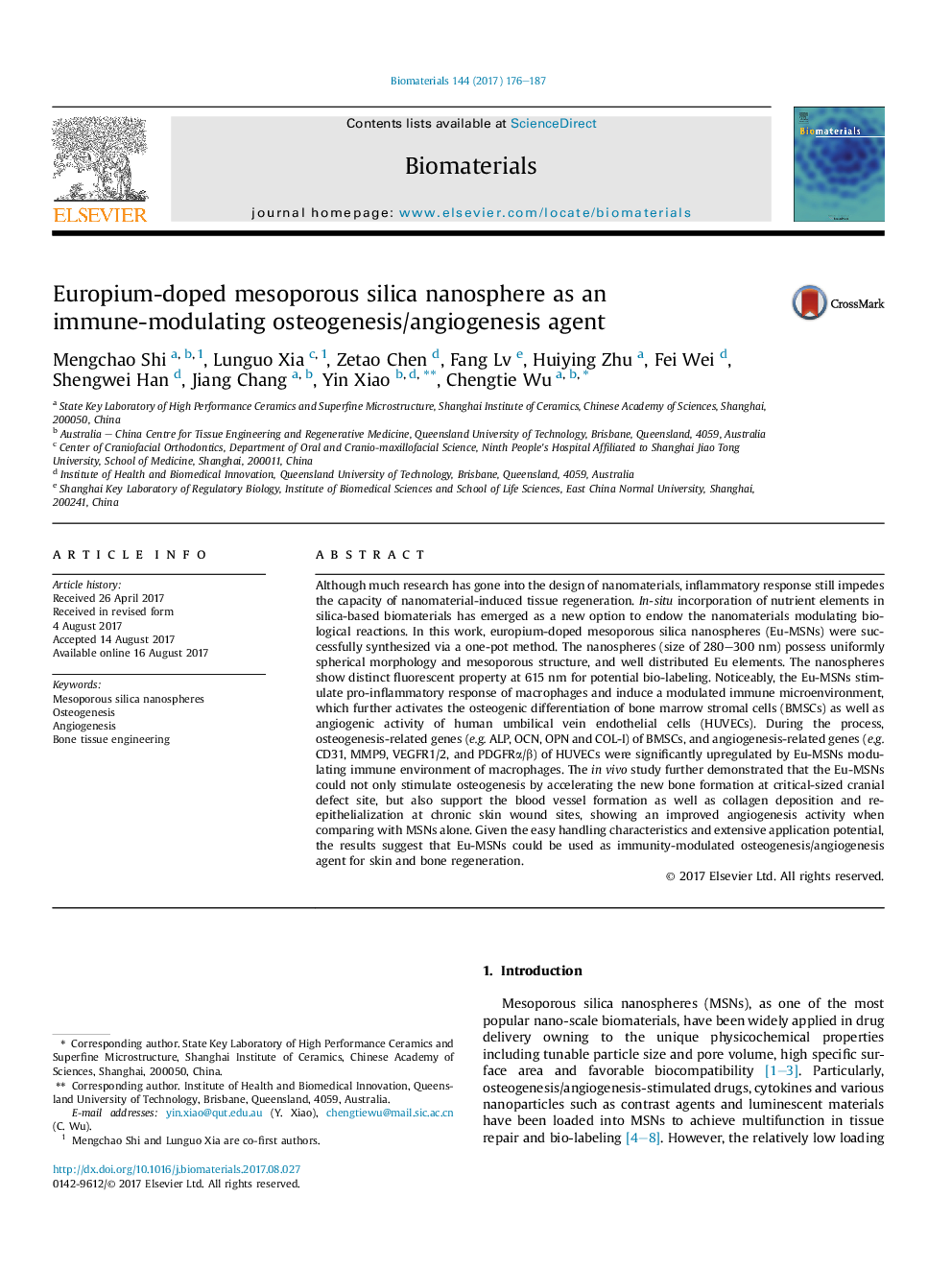| کد مقاله | کد نشریه | سال انتشار | مقاله انگلیسی | نسخه تمام متن |
|---|---|---|---|---|
| 4752244 | 1416123 | 2017 | 12 صفحه PDF | دانلود رایگان |
Although much research has gone into the design of nanomaterials, inflammatory response still impedes the capacity of nanomaterial-induced tissue regeneration. In-situ incorporation of nutrient elements in silica-based biomaterials has emerged as a new option to endow the nanomaterials modulating biological reactions. In this work, europium-doped mesoporous silica nanospheres (Eu-MSNs) were successfully synthesized via a one-pot method. The nanospheres (size of 280-300 nm) possess uniformly spherical morphology and mesoporous structure, and well distributed Eu elements. The nanospheres show distinct fluorescent property at 615 nm for potential bio-labeling. Noticeably, the Eu-MSNs stimulate pro-inflammatory response of macrophages and induce a modulated immune microenvironment, which further activates the osteogenic differentiation of bone marrow stromal cells (BMSCs) as well as angiogenic activity of human umbilical vein endothelial cells (HUVECs). During the process, osteogenesis-related genes (e.g. ALP, OCN, OPN and COL-I) of BMSCs, and angiogenesis-related genes (e.g. CD31, MMP9, VEGFR1/2, and PDGFRα/β) of HUVECs were significantly upregulated by Eu-MSNs modulating immune environment of macrophages. The in vivo study further demonstrated that the Eu-MSNs could not only stimulate osteogenesis by accelerating the new bone formation at critical-sized cranial defect site, but also support the blood vessel formation as well as collagen deposition and re-epithelialization at chronic skin wound sites, showing an improved angiogenesis activity when comparing with MSNs alone. Given the easy handling characteristics and extensive application potential, the results suggest that Eu-MSNs could be used as immunity-modulated osteogenesis/angiogenesis agent for skin and bone regeneration.
The prepared Eu-MSNs showed an inflammatory stimulation on macrophages, which further induced the osteogenic differentiation of BMSCs via upregulating the gene expression of COL-I, OCN, ALP and RUNX2 as well as the angiogenic differentiation of HUVECs via upregulating the gene expression of CD31, MMP9, VEGFR and PDGFR. The particles were then applied for in vivo experiments and showed a satisfactory effect on bone repair of cranial defect and neovascularization at chronic wound site.333
Journal: Biomaterials - Volume 144, November 2017, Pages 176-187
